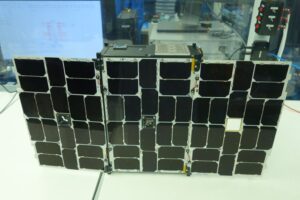At that time, NOAA also placed its the first order, directing each company to provide 500 daily radio occultation soundings for 30 days.
“NOAA successfully used the Delivery Order-1 data to verify data quality and formats and to conduct an end-to-end test flow of data through NOAA’s ingest, distribution, and archive systems and into Numerical Weather Prediction models,” according to a Feb. 19 news release from the NOAA Office of Space Commerce.
Under the latest order, NOAA is directing GeoOptics and Spire Global to supply 1,300 daily radio occultation soundings apiece from March to September. As part of the latest order, NOAA is obtaining a license to share the data immediately with U.S. government agencies and to share it publicly after 24 hours.
“Following verification of data and system readiness, NOAA plans to begin incorporating commercial radio occultation data into operational numerical weather prediction models in May,” according to the news release.
NOAA has not revealed the value of the first or second data delivery orders.
To feed weather models, the companies must provide radio occultation data as soon as it’s acquired. NOAA has “stringent data quality, latency and reliability requirements,” GeoOptics noted in a Feb. 19 news release.
“With strong support from Congress, NOAA has developed pioneering programs to include innovative, commercial data sources in its core forecast products,” GeoOptics CEO Conrad Lautenbacher, a former NOAA administrator, said in a statement. “After several years of technology development, testing and program formulation, NOAA’s commitment to operational use of commercial satellite data in safety-critical weather forecasts is a significant milestone for the commercial satellite data industry.”
GeoOptics has three satellites in its operational fleet.
Spire Global has more than 100 satellites with multiple sensors to gather weather data and monitor maritime and aircraft traffic.



